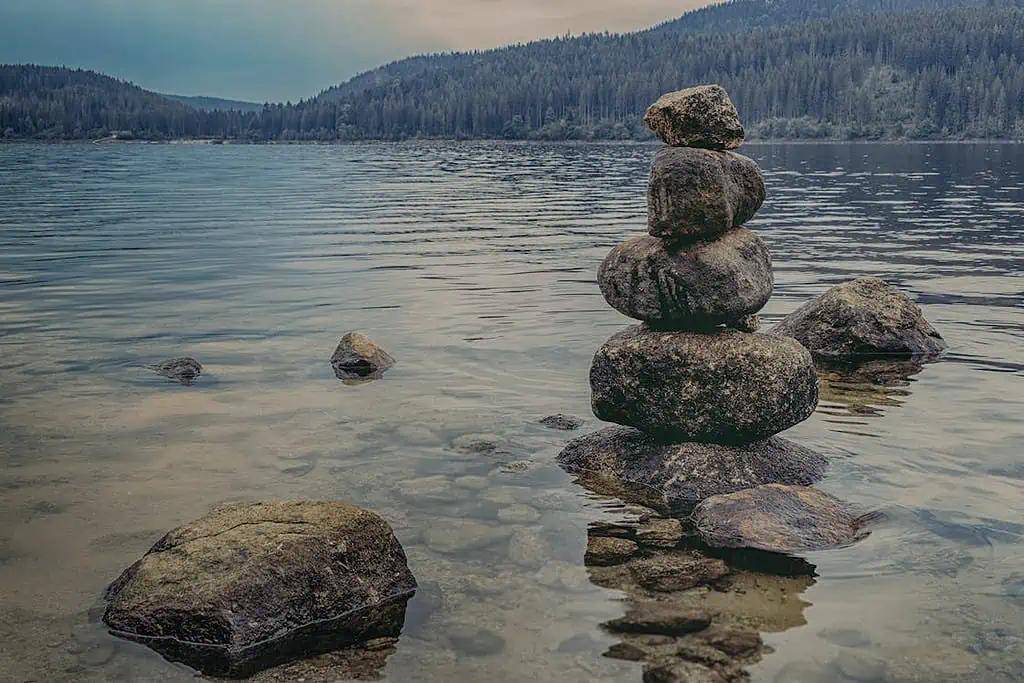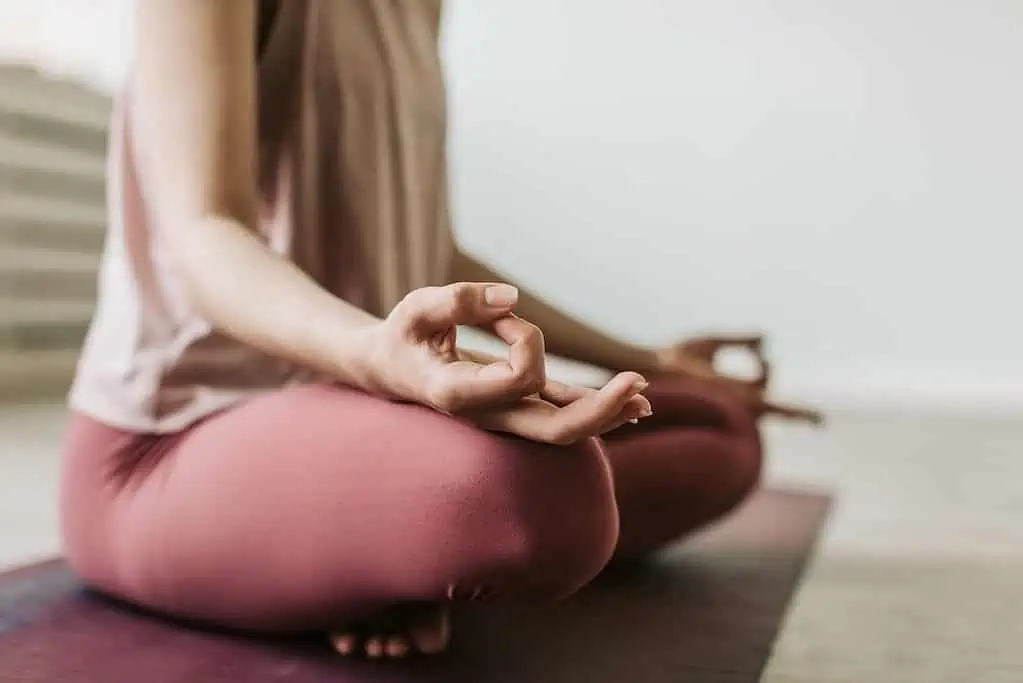Have you got questions about meditation? We’ve got answers. Today we will take you on a deep journey through everything you need to know about this thousand-year-old practice and how it has developed in the modern world.
The more meditation questions you seek answers for, the deeper you will be guided into self-enquiry. Go there, see what exists and enjoy the journey. And while you are at it, see how you feel about bringing meditation into your daily life.
You might be surprised how a daily meditation session can reduce anxiety or create more focused attention. The answers to the following questions will encourage optimum well-being and will hopefully inspire you to meditate for just a few minutes per day.
What are you waiting for? Start paying attention to your breath, and get ready to meditate regularly for the best quality of life that you seek!
Contents
- 1 What is meditation?
- 2 What are the basic principles of meditation?
- 3 What are some common meditation techniques?
- 4 What do meditation sessions look like?
- 5 How can I find the right meditation teacher for me?
- 6 What is mindfulness meditation?
- 7 Should I meditate regularly?
- 8 How many minutes of meditation practice should I do each day?
- 9 What are the short-term health benefits of meditation?
- 10 What are the long-term health benefits of meditation?
- 11 How can I deepen my self-awareness through meditation practice?
- 12 What is the difference between beginner and advanced meditators?
- 13 What is the difference between old traditional meditation practices and new age styles?
- 14 Is meditation connected to religious beliefs?
- 15 What is the best meditation app?
- 16 Why should I use Mudras during meditation?
- 17 How can I try mantra meditation?
- 18 Should I use props to help me meditate?
- 19 What breath pattern should I use in meditation?
What is meditation?
Meditation is a tool for practicing present-moment awareness. There are many styles of meditation, from stillness to guided to walking meditations, each one presents a plethora of health benefits.
Most meditations are focused on mindfulness and finding a place of deep inner peace and stillness. Practicing meditation will help you to observe your thoughts, your body and to find a way to be at peace in the present moment.
What are the basic principles of meditation?
When you learn meditation, you will quickly learn the key principles. With the goal to stay in the present moment, you will also learn about the importance of deep breaths with diaphragmatic breathing (belly breathing), noticing and then letting go of negative emotions and sometimes focusing on a meditation object (such as breathing exercises, your thoughts, a mantra, an object or a part of your body).
Meditation practice is designed to be an intensive practice of calming the mind so that you can experience better mental health and clarity in your day to day life. Although not entirely necessary, it is encouraged to start a daily practice of meditation if you want to experience the benefits.
What are some common meditation techniques?
There are so many facets of meditation used around the world. But some of the most common meditation techniques include:
- Silent Meditation – sitting quietly in stillness and silence, the name says it all. This can also be practiced for a number of days, and this technique is called Vipassana Meditation.
- Guided Meditations – these may be focused on breathing exercises, breath awareness, visualization, or manifestation.
- Guided Body Scan – a guided meditation that takes you through the body sensations, consciously relaxing every part of you.
- Yoga Nidra – a form of yogic sleep, this guided meditation is similar to a body scan, but also incorporates visualization. It is deeply relaxing, and although it is meant to feel like sleep, you should try not to fall asleep!
- Mindfulness meditation – any technique that brings awareness to what is happening around you in the present moment is known as a mindfulness practice. This can be a silent meditation, a more formal meditation type, or it can be guided.
- RAIN Meditation – a type of meditation to help with self-acceptance.
- Centering Meditation – a practice to bring you back to your center, where inner peace resides.
What do meditation sessions look like?
Depending on the style of meditation you are learning, a guided or group meditation will often start with a small introduction of a topic of the day, or an explanation of the formal meditation type that you will try. It will then be followed by the meditation teacher’s cue to start the meditation session. All students will then move into the meditative practice.
It might involve silence, deep breaths, or even movement or dance. Every teacher will create a different looking session.
How can I find the right meditation teacher for me?
To find a meditation teacher, you must first decide what type of meditation practice you want to learn. Take a look online for teachers near you, and try out a few styles and classes to learn more about all the types of offerings available. You will know when you find the right one for you!
What is mindfulness meditation?
Mindfulness meditation practice is a type of meditation that constantly brings you into the present moment. It may use breath awareness, a body scan, a meditation object or the five senses, to drop you into the here and now.
When the mind wanders, mindfulness is the art of returning back to the moment.

Should I meditate regularly?
Yes! Of course, if you want to receive the benefits of meditation, having a daily practice will contribute significantly to this. We know you have a busy life, but incorporating meditation into your daily life can look like meditating in bed, on your commute to work, as you walk down the street, or as you lay down and prepare to sleep.
Committing to a regular meditation routine, at a set time per day will help you to concretize the practice.
How many minutes of meditation practice should I do each day?
Start with one minute, and watch your practice grow. A few minutes is better than no minutes. Some meditation challenges will start with a baseline of one to two minutes per day and then add one extra minute each following day or week so that you slowly build up a healthy meditation practice.
If you are new to meditation and you try to start with one hour per day, this habit is likely to stop after a week. But if you choose just a few minutes that you can manage to fit into your schedule, it will be a habit that you can continue to build upon.
Slowly, you might even find yourself wanting to put more time into your meditation practice!
What are the short-term health benefits of meditation?
Meditation studies are extensive and have been trialed on front-line workers, families, students, clinical patients, school kids, companies, and more! The list goes on. In the short term, the benefits of meditation include:
- Improvement in short-term memory – this study showed that there were improvements after just 8 minutes of meditation.
- Improved mood and motivation
- Decreased anxiety and depression
- Improved mental clarity
- A short practice can also instantly relieve stress
- Makes it easier to fall asleep
What are the long-term health benefits of meditation?
Overtime, if you practice meditation daily, you will notice some of the short term effects become a long term quality in your everyday life. Some of these positive effects include:
- Better moods and resilience
- Paying attention to the present moment more often
- Ease in falling asleep
- The mind wanders less and you have greater focus and clarity
- Long term anxiety relief
- Less mental chatter and distracting thoughts
- Greater overall well-being and better mental health
- Reduced stress and better reaction when managing stress
- Lowered blood pressure
- Personal growth
How can I deepen my self-awareness through meditation practice?
Personal growth is a natural part of meditation. When you sit in stillness for a certain amount of time per day, you will start to become more familiar with your mind and your bodily sensations. You will start to feel a deeper connection with yourself, others and the world around you.
The ancient practice of meditation was sought out by spiritual seekers of the East, who spoke of a universal life force current that runs through us all. When you start meditating, you too will get to experience a glimpse of this universal energy.
What is the difference between beginner and advanced meditators?
If you start meditating, it is likely that it will take some time for you to drop into this ‘inner bliss’ state that many people talk about. You may even have the urge to fall asleep during meditation.
But, everybody has to start somewhere, and when you begin to invite daily meditation practice into your life, you will find your focused attention becomes easier to access.
Over time, and with inner exploration, you will be able to progress to an advanced state of meditation. Advanced meditators are those who have been meditating for many years. They can drop out of the busy mind and into the bliss state more easily, as they are used to spending large chunks of time with a quiet mind.
Everybody has the potential to become an advanced meditator, it just takes time and commitment to the practice.
What is the difference between old traditional meditation practices and new age styles?
Old traditional meditation practices, were based on silence, breathing exercises and body scans. They were often practiced in small groups with a guru, or alone, out in the wilderness of nature. It was monks, seers, and sages who would renounce their material world to seek a path of meditation and enlightenment. They often had to prove their devotion to their path and their guru (teacher) to be taught the techniques. These practices were passed on through word of mouth and only known by a select few.
At one point, meditation from India was bought to America, and this is where the West first had a taste of the ancient practices of the East. American spiritual seekers took these practices and spread meditation far and wide. Over time, it continued to evolve, to what it is today.
Today, you don’t need to renounce your old life to seek meditation, and it has become rather easy to be both a financially focused entrepreneur and a meditator at the same time. In fact, the benefits of meditation will help you in all areas of your life.
New age meditations are often guided by a number of different teachers, there is music used in the backgrounds and people can mix and choose which style they want to follow.
Thanks to technology, you don’t need a guru, but just a smartphone and you can listen to meditations while on the go, at the tip of your fingers.
Also, due to increased stress in the modern world, many meditation sessions are focused on instant stress relief and strategies to reduce anxiety. This is the first step that we need to master before pursuing enlightenment!
Is meditation connected to religious beliefs?
These days, people from any religious beliefs can meditate.
In older times, meditation was more so associated with Hinduism and Buddhism, two ancient cultures from the East that practiced meditation.
But if meditation is about connecting with a higher universal source, then perhaps all religions who seek to connect with God have aspects of meditation in their practices.
What is the best meditation app?
This is one of the most asked questions about meditation. Due to the thousands of apps found online these days, the choice can be overwhelming.
The best thing to do is try a few and find what type of guided meditations you enjoy, or which style of meditation you like! On many apps you will be able to filter through many recordings to choose a specific length of time, and style of meditation.
If you want to know where to start, you can try one of these:
- Insight Timer– a free app (with a paid version) full of thousands of free meditations. They also hold live meditation and yoga events so that you can tune into the teachers and meditate in real time with people from all over the world. This app has meditations for sleep, energy, centering, imagery, manifestation and more. It’s a very extensive meditation library!
- Calm – A popular choice for finding your inner calm and helping with falling asleep. Calm has a limited free trial, and if you enjoy you can stay on for the paid version. With calming visuals, sounds and voices, everything about this app will make you relax.
- Headspace – a great app for beginners, this will take you through a guided journey from the very beginning. It is a great introduction to meditation.
- Other apps worth noting are Buddify, Smiling Mind, and Simple Habit.
Why should I use Mudras during meditation?
Mudras are hand gestures that create a specific energy in the body. For example, the most well known mudra, Gyana Mudra, is the act of connecting the thumb and first finger. It helps to connect the energy flow through the body and create a deeper sense of inner calm and focus.
You can take a look at the other 12 most common hand mudras in this article if you want to enhance your meditation session.

How can I try mantra meditation?
Mantras are sounds, or vibrations that hold a specific meaning. Althought most mantras used in meditation are spoken in Sanskrit, the Ancient Indian language, it is also possible to use modern English to create your own mantras too.
To do mantra meditation, you should focus the mind on one word, or one short sentence, and repeat it for a specific amount of time. This meditative practice will help you to calm a busy mind.
Should I use props to help me meditate?
You can try using a meditation cushion or meditation blanket to make you more comfortable during meditation. The more comfortable you are, the easier it will be for you to drop into a meditative state.
What breath pattern should I use in meditation?
If you are working with guided meditations, you will often be guided to breathe with the instructions of the teacher.
If you are meditating yourself, then you can begin by simply noticing what your natural breathing pattern is and what body sensations it creates for you.
It is absolutely normal for your breathing to vary day to day, depending on your current stress level or situation, but with regular practice and specific breathing exercises, you will find that meditation helps to create a regular breath pattern in your body.
Using diaphragmatic breathing is ideal as it is a type of breathing that helps you to feel calm and can result in reduced anxiety. Long periods of diaphragmatic breathing will lead to long periods of good health and wellbeing.
When you move into more advanced stages of meditation, you can also try a number of pranayama techniques, yogic breathing techniques, that create specific effects in the body. This article will guide you through 15 well known pranayama breathing exercises.

Hopefully this answered all of your meditation questions! If you are still seeking more information, take a look at our detailed blog posts for a deep dive into all kinds of meditation topics.


